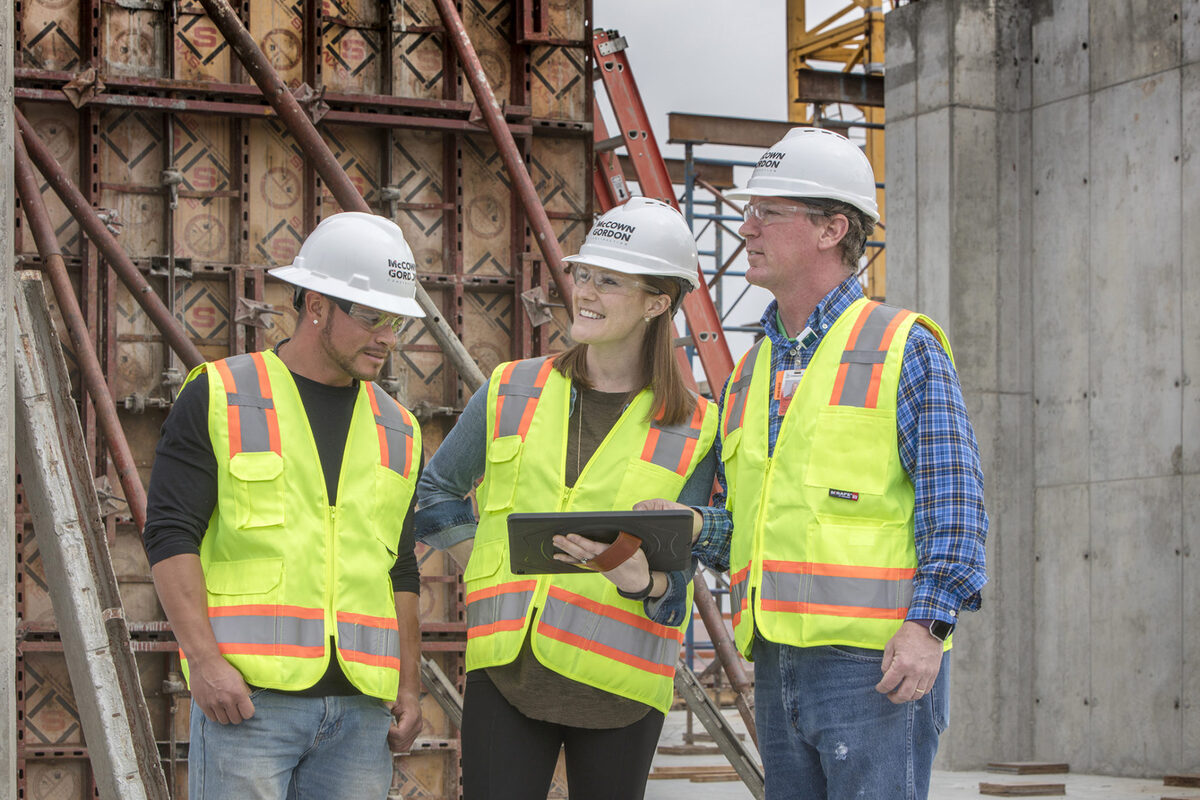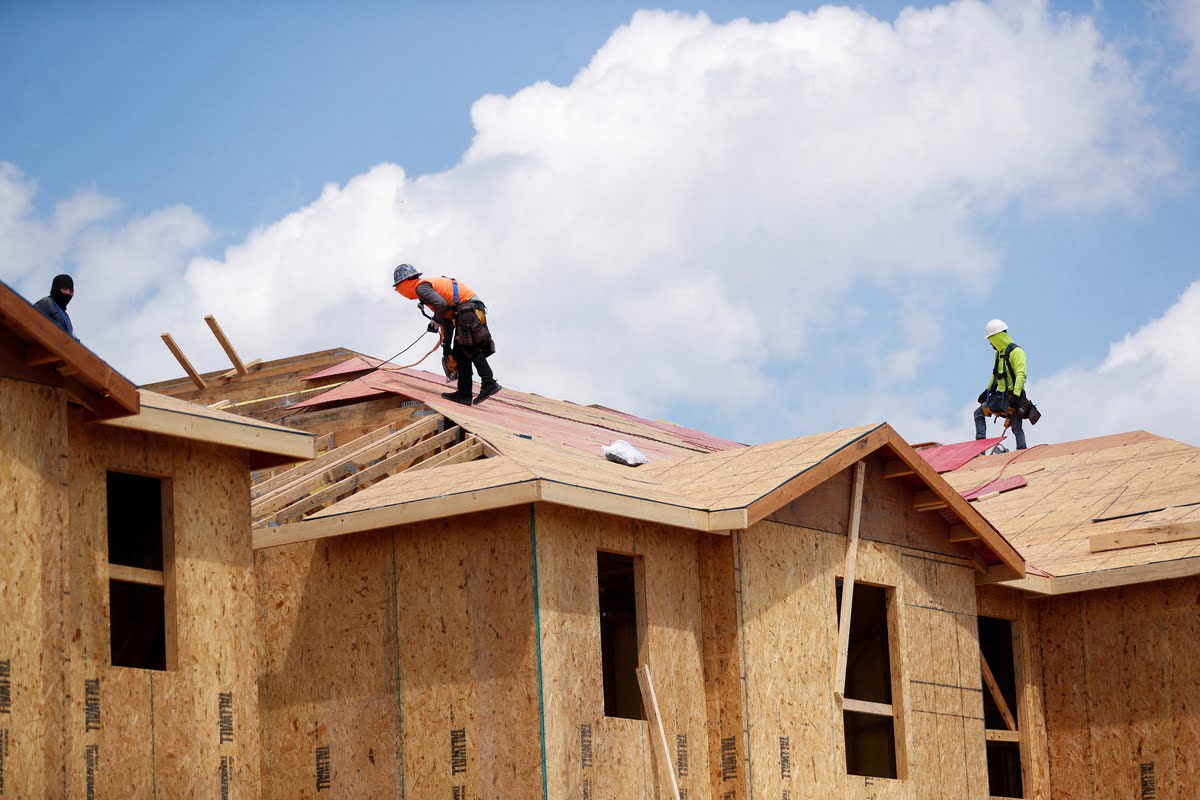Home>diy>Building & Construction>How To Price A Job In Construction


Building & Construction
How To Price A Job In Construction
Modified: January 24, 2024
Learn how to accurately price a construction job in the building and construction industry. Gain insights and tips on estimating costs and maximizing profitability.
(Many of the links in this article redirect to a specific reviewed product. Your purchase of these products through affiliate links helps to generate commission for Storables.com, at no extra cost. Learn more)
Introduction
When it comes to pricing a job in construction, there are several factors to consider to ensure accuracy and profitability. As an essential part of running a construction business, accurately estimating and pricing a project is crucial for success. Whether you are a general contractor, subcontractor, or a freelancer, understanding the intricacies of job pricing is essential to ensure that your bids are competitive and profitable.
Effective job pricing involves considering various elements such as labor costs, material costs, equipment expenses, overhead, and profit margins. It requires a comprehensive understanding of the project scope, as well as the ability to factor in market conditions and competitive bidding strategies.
In this article, we will guide you through the process of pricing a job in construction and discuss the key factors to consider. By following these steps, you’ll be well-equipped to create accurate estimates and competitive bids that drive the success of your construction business.
Key Takeaways:
- Accurate cost estimation and thorough analysis of labor, material, and equipment needs are essential for precise and competitive pricing in construction projects.
- Adapting to market conditions, offering value-engineering recommendations, and cultivating supplier relationships are key strategies for successful competitive bidding in the construction industry.
Read more: How To Price Lawn Care Jobs
Factors to Consider in Pricing a Construction Job
When pricing a construction job, it’s crucial to take into account several key factors that can significantly impact the overall cost. These factors include:
- Project Scope: The first step in pricing a construction job is understanding the project scope in detail. This includes reviewing the plans and specifications, identifying any complexities or challenges, and determining the required resources and timeline for completion.
- Labor Costs: The cost of labor is a major component of any construction project. Consider factors such as the number of workers needed, their skill level and experience, and the amount of time required to complete the project. Additionally, take into account factors like labor unions, prevailing wage rates, and any overtime or weekend work that may be necessary.
- Material Costs: The cost of materials can vary significantly depending on the project requirements, location, and market conditions. Research and estimate the quantity and cost of materials needed, including concrete, steel, lumber, plumbing fixtures, electrical components, and finishing materials. Consider factors like supplier pricing, availability, and transportation costs.
- Equipment and Machinery Costs: Depending on the project, you may need to factor in the cost of renting or purchasing specific equipment and machinery. Consider the number of machines needed, their rental or purchase costs, fuel expenses, maintenance, and operator wages.
- Overhead and Profit: Overhead costs include indirect expenses such as office rent, utilities, insurance, licenses, and administrative salaries. Factor in these costs to ensure that you cover your business’s overhead expenses and make a reasonable profit. Determine your desired profit margin and include it in the pricing calculation.
- Market Conditions: Keep an eye on market trends and conditions that may impact the cost of construction materials, labor rates, and equipment rentals. If the market is competitive, you may need to adjust your pricing strategy to remain competitive while maintaining profitability.
- Competitive Bidding: In some cases, you may need to submit a bid for a construction project where multiple contractors are competing for the job. When competitive bidding, it’s crucial to carefully analyze the project, consider your costs, and create a bid that is competitive but still allows for a reasonable profit.
By considering these factors and conducting thorough research and analysis, you can ensure that your pricing for construction jobs is accurate, competitive, and profitable. Each project is unique, so take the time to evaluate the specific requirements and circumstances to develop a comprehensive pricing strategy.
Cost Estimation Methods in Construction
Cost estimation is a critical process in construction, as it helps determine the overall budget required for a project. Several methods are commonly used in the construction industry to estimate costs. Here are a few commonly used methods:
- Analogous Estimating: This method is based on comparing the current project with similar projects completed in the past. The estimator uses historical data and adjusts it based on the differences between the current project and the previous ones. This method is quick and relatively simple, but accuracy may vary depending on the similarities between projects.
- Bottom-up Estimating: This method involves breaking down the project into smaller tasks or components and estimating the cost of each individual element. The estimator considers the quantities of materials, labor hours, equipment usage, and other specific details for each task. This method provides a thorough and detailed estimation, but it can be time-consuming.
- Parametric Estimating: Parametric estimating involves using historical data and mathematical relationships to develop cost estimates. It uses predetermined parameters or ratios to estimate costs based on certain project characteristics. For example, the cost per square foot of a building can be multiplied by the area to estimate the total cost. This method is useful for quick estimations, but accuracy depends on the reliability of the parameters used.
- Three-point Estimating: The three-point estimating method takes into account optimistic, pessimistic, and most likely scenarios. The estimator assigns a best-case, worst-case, and most likely estimate for each task or component. These estimates are then used to calculate an average or weighted average to determine the overall cost estimate. This method helps incorporate uncertainty and risk into the estimation process.
- Vendor Quotes: Another method for cost estimation is obtaining quotes from vendors and suppliers. This involves reaching out to potential suppliers and requesting detailed quotes for the materials and equipment required for the project. Adding up these quotes helps provide a more accurate estimate of the project cost. However, this method requires thorough research and negotiation skills to ensure competitive pricing.
- Historical Data: Utilizing historical data from previous projects is a valuable method for estimating costs. By analyzing similar past projects and their associated costs, estimators can develop a benchmark for future projects. This method helps in identifying trends and patterns, improving the accuracy of cost estimations.
It’s important to note that each cost estimation method has its strengths and limitations. Often, a combination of methods is used to obtain the most accurate estimate for a construction project. Constantly reviewing and refining these methods based on real-world project data can help improve the accuracy of future cost estimations.
Breaking Down the Project Scope
Before you can accurately price a construction job, it’s essential to thoroughly understand and break down the project scope. This involves a detailed analysis of the required tasks, deliverables, and overall objectives of the project. Breaking down the project scope helps identify the specific requirements and resources needed, enabling you to estimate costs more accurately.
Here are some steps to effectively break down the project scope:
- Review the Project Plans and Specifications: Carefully examine the project plans and specifications provided by the client or the architect. Pay attention to key details such as building dimensions, structural requirements, site conditions, and any special features or design elements. This review will help you gain a clear understanding of the project’s complexity and any specific needs or challenges.
- Identify Tasks and Deliverables: Break down the project into smaller, manageable tasks or deliverables. These could include excavation, foundation work, framing, electrical, plumbing, finishing, and landscaping, among others. Clearly define the scope of each task and outline the expected deliverables or milestones associated with each. This breakdown will help you estimate the time, labor, and materials required for each component.
- Consider Sequence and Dependencies: Understand the logical sequence of tasks in the project. Identify any dependencies or interdependencies between tasks, ensuring that each task is scheduled and executed in the correct sequence. This analysis will help you determine potential bottlenecks or areas where the project timeline could be affected.
- Assess Resource Allocation: Evaluate the resources required for each task. This includes labor, materials, tools, and equipment. Determine the number of workers, their skill level, and the estimated hours needed for each task. Consider the availability and cost of materials, as well as the specific equipment or machinery required. This assessment will help you estimate the resource costs accurately.
- Consider Site Conditions and Constraints: Take into account any site-specific conditions or constraints that may impact the project scope. This could include factors such as limited access, restricted working hours, noise restrictions, or environmental considerations. Understanding these constraints will help you plan and allocate resources accordingly.
- Document Scope Changes: Throughout the project, there may be changes or modifications to the scope. It’s important to document and communicate these changes effectively, ensuring that the pricing reflects the revised scope. Use change order requests to capture any scope changes and update the pricing accordingly.
By breaking down the project scope in detail, you can effectively plan and estimate the costs associated with each task. This analysis helps ensure that you have a clear understanding of the project requirements and can provide a comprehensive and accurate pricing proposal.
Calculating Labor Costs
One of the critical components of pricing a construction job is accurately calculating labor costs. Labor expenses can significantly impact the overall project budget, so it’s essential to have a systematic approach to estimate and calculate these costs. Here are some steps to help you calculate labor costs effectively:
- Determine Required Labor Hours: Review the project scope and break it down into specific tasks. Each task will require a certain number of labor hours to complete. Consider factors such as the complexity of the task, the skill level required, and any site-specific conditions that may affect productivity. Make an estimate of the total labor hours required for each task.
- Evaluate Labor Rates: Determine the labor rates for each worker or craft involved in the project. This includes considering factors such as wage rates, union agreements, local labor laws, and any additional benefits or overtime rates. Consult industry benchmarks and labor market data to ensure competitive and accurate labor rates.
- Consider Productivity Factors: Account for productivity factors that may affect the efficiency of labor. These factors include breaks, safety protocols, weather conditions, and the availability of necessary tools and equipment. Estimate the productivity rate as a percentage, and calculate the adjusted labor hours based on this rate. This adjustment helps account for any potential downtime or inefficiencies during the project.
- Categorize Labor Costs: Differentiate between direct and indirect labor costs. Direct labor costs include wages and benefits for workers directly involved in the construction project, such as carpenters, electricians, and plumbers. Indirect labor costs include expenses related to supervision, management, and support staff, such as project managers, site supervisors, and administrative personnel. Allocate the appropriate budget for each category of labor costs.
- Include Labor Burden: Labor burden refers to the additional costs incurred beyond wages and benefits. These costs include payroll taxes, insurance, workers’ compensation, and other employee-related expenses. Calculate the labor burden as a percentage of the direct labor costs and add it to the overall labor cost estimate. The labor burden helps cover the hidden costs associated with employing workers.
- Consider Subcontractor Labor: In some cases, subcontractors may be hired for specific tasks or trades within the construction project. When calculating labor costs, include the costs associated with hiring and managing subcontractors. This includes their fees, insurance, and any additional supervision required.
It’s important to regularly review and update labor cost estimates throughout the project to account for any changes in labor rates, productivity, or scope. Effective labor cost estimation ensures that you accurately account for the workforce required and helps you develop a competitive and profitable pricing strategy for your construction job.
Read more: How To Bid For Construction Jobs
Determining Material Costs
Calculating material costs is a crucial step in accurately pricing a construction job. Material expenses can significantly impact the overall project budget, making it essential to have a thorough understanding of the materials needed and their associated costs. Here are several steps to help you determine material costs effectively:
- Review Project Plans and Specifications: Carefully examine the project plans and specifications to identify the required materials. Take note of quantities, sizes, specifications, and any special requirements or brand preferences specified in the project documents. This review will help you create a comprehensive materials list.
- Research Supplier Pricing: Contact various suppliers and vendors to obtain pricing information for the materials needed. Compare prices and quality to ensure you get the best value. Don’t forget to consider factors such as delivery costs and lead times when evaluating supplier quotes.
- Create a Materials List: Use the project plans and specifications to create a detailed materials list. Include the quantity, unit of measurement, and cost per unit for each material required. Organize the list by trade or task to have a clear overview of the materials needed for each construction phase.
- Factor in Waste and Contingencies: Account for waste and contingencies when estimating material costs. Construction projects often encounter unforeseen circumstances that may result in material wastage or the need for additional materials. It’s wise to add a percentage (usually between 5-10%) to the material quantities to accommodate any potential waste or contingencies.
- Consider Bulk Discounts: Inquire about bulk discounts when purchasing materials in large quantities. Buying in bulk can often lead to significant cost savings. Negotiate with suppliers to secure the best possible price for the materials needed.
- Account for Price Fluctuations: Keep in mind that material prices can fluctuate due to various factors such as market demand, availability, and inflation. Stay up to date with industry trends and communicate with suppliers regularly to anticipate and account for any price fluctuations in your cost estimation.
- Include Taxes and Duties: Be aware of any taxes, duties, or import/export charges that may apply to the materials. These costs should be factored into the overall material cost estimate to avoid surprises during the project.
- Document Material Substitutions: Sometimes, project plans may allow for substitutions or alternative materials. If approved by the client or architect, consider the cost difference between the specified materials and any proposed substitutions. Ensure that any changes are properly documented and communicated to avoid cost discrepancies.
By following these steps and diligently researching, documenting, and estimating material costs, you can ensure that your pricing for construction projects is accurate and competitive. Regularly reassess and update your material cost estimates to reflect any changes in supplier pricing or project requirements throughout the duration of the project.
When pricing a job in construction, be sure to accurately calculate all costs including materials, labor, equipment, and overhead. Don’t forget to account for any unexpected expenses or potential changes in the project scope.
Factoring in Equipment and Machinery Costs
When pricing a construction job, it’s crucial to consider the costs associated with equipment and machinery. These costs can be significant and directly impact the overall project budget. Factoring in equipment and machinery costs requires a systematic approach to ensure accurate estimation. Here are several steps to help you calculate equipment and machinery costs effectively:
- Identify Required Equipment: Review the project plans and specifications to identify the specific equipment and machinery needed for each task or phase of the project. Consider factors such as the size, capacity, and capabilities required to complete the work efficiently. Create a comprehensive list of equipment needed for the project.
- Research Rental Rates: If you don’t already own the required equipment, research rental rates from various suppliers. Obtain quotes based on the duration of equipment usage and negotiate for the best possible rates. Take into account any additional charges such as delivery, fuel, maintenance, and operator fees.
- Calculate Ownership Costs: If you own the necessary equipment, calculate the ownership costs. This includes the purchase price, financing costs, insurance, maintenance, repairs, and any associated licenses or permits. Determine an average monthly or yearly cost based on the expected lifespan and usage of the equipment.
- Estimate Utilization: Evaluate the expected utilization rate of each piece of equipment. Consider factors such as the number of hours the equipment will be used, any potential downtime for maintenance or repairs, and the efficiency of equipment operators. Calculate the effective usage hours and adjust the equipment cost accordingly.
- Account for Depreciation: Take into account the depreciation of owned equipment when estimating costs. As equipment ages, its value decreases. Calculate the depreciation rate based on the expected lifespan of the equipment and apply it to the ownership costs. This ensures that you allocate a portion of the equipment cost to each project.
- Consider Equipment Efficiency: Evaluate the efficiency of the equipment in terms of fuel consumption, productivity, and operational costs. Opt for equipment that offers better fuel efficiency and reduces the overall operational expenses. Taking these factors into account helps maintain accuracy in estimating equipment costs.
- Include Contingency: Add a contingency factor to the equipment costs to account for unforeseen circumstances or unexpected equipment requirements during the project. This contingency factor should be a percentage of the total equipment costs and helps mitigate risk.
- Document Equipment Substitutions: In some cases, project plans may allow for equipment substitutions or alternatives. Consider the cost difference between the specified equipment and any proposed substitutions. Ensure that any equipment changes are properly documented and communicated to avoid cost discrepancies.
By diligently estimating and factoring in equipment and machinery costs, you can ensure that your pricing for construction projects is accurate and reflective of the resources required. Regularly reassess and update your equipment cost estimates based on market rates and any changes in project needs.
Including Overhead and Profit
When pricing a construction job, it’s essential to consider overhead and profit to ensure the financial viability and sustainability of your business. Overhead costs are the indirect expenses incurred in running your construction company, while profit is the amount you aim to make from the project. Calculating and including overhead and profit in your pricing is crucial for maintaining profitability. Here are several steps to help you include overhead and profit effectively:
- Identify Overhead Costs: Start by identifying the various types of overhead costs your business incurs. These may include office rent, utilities, insurance, licenses, permits, taxes, administrative salaries, and other general operational expenses. Review your financial records to accurately identify and track these costs.
- Allocate Overhead Costs: Allocate your overhead costs to the construction project. This can be done using different methods such as a percentage of the direct costs or based on labor hours. Calculate the proportionate share of each overhead cost to be attributed to the project.
- Determine Profit Margin: Determine the desired profit margin you wish to achieve for the project. This margin should take into account your company’s financial goals, market conditions, and the level of risk associated with the project. Consider factors such as project complexity, duration, market competition, and your company’s reputation when setting an appropriate profit margin.
- Add Overhead and Profit Markup: Apply the allocated overhead costs and profit margin markup to your direct costs. Add the overhead costs to the direct costs of labor, materials, and equipment. Then, add the profit margin on top of the total project costs to calculate the final price you will propose to the client.
- Review and Fine-tune: Regularly review and fine-tune your overhead and profit calculations based on actual project outcomes and market conditions. Carefully analyze your company’s financial performance to ensure that your overhead costs and profit margins are realistic and aligned with business goals.
- Consider Competitive Pricing: When pricing a project, it’s important to consider the competitiveness of the market. Assess the pricing strategies of your competitors and compare them to your own overhead and profit margins. Strive to strike a balance between remaining competitive and maintaining profitability.
- Communicate Transparently: When presenting your pricing proposal to clients, clearly outline the costs associated with overhead and the profit margin. Transparency helps establish trust and ensures that clients understand the value they are receiving for the price quoted.
Including overhead and profit in your pricing is essential for the long-term success of your construction business. By accurately allocating overhead costs, setting realistic profit margins, and regularly reviewing and adjusting your pricing strategy, you can ensure profitability while delivering value to your clients.
Adjusting for Market Conditions
Market conditions play a significant role in pricing a construction job. The construction industry can experience fluctuations in labor costs, material prices, and overall demand, which can impact the profitability of your projects. To ensure competitiveness and profitability, it is important to adjust your pricing strategy based on prevailing market conditions. Here are several steps to help you adjust for market conditions effectively:
- Monitor Labor Costs: Keep a close eye on labor market trends and fluctuations in labor costs. Stay informed about changes in minimum wage requirements, union agreements, and prevailing wage rates. Adjust your labor cost estimates accordingly to reflect any changes in labor rates.
- Research Material Pricing: Stay updated with changes in material prices. Monitor market trends, changes in supply and demand, and any other factors that may affect material costs. Regularly communicate with suppliers and vendors to gain insights into future price fluctuations. Adjust your material cost estimates based on the latest market information.
- Consider Seasonal Factors: Some construction markets experience seasonal fluctuations. Take into account the impact of seasonal demand on pricing. In busy construction seasons, labor and material costs may be higher due to increased demand. Adjust your pricing strategy to reflect these seasonal variations.
- Analyze Competitive Pricing: Research and analyze the pricing strategies of your competitors. Consider what rates they are offering for similar projects. Adjust your pricing strategy to remain competitive without compromising profitability. Find a balance between being cost-effective and delivering quality work.
- Utilize Market Intelligence: Leverage market intelligence tools and industry reports to gain insights into market conditions. Industry associations, trade publications, and online platforms can provide valuable information about market trends, upcoming projects, and competitor activity. Stay informed about market dynamics to make informed pricing decisions.
- Adapt your Overhead and Profit Ratio: To account for changes in market conditions, you may need to adjust your overhead and profit ratio. During times of high demand or increased competition, your profit margin may need to be adjusted to remain competitive. Monitor your expenses and financial performance to ensure that your adjusted ratio maintains profitability.
- Consider Value Engineering: Value engineering involves finding cost-effective alternatives without compromising quality. Explore different construction methods, materials, or technologies that can help reduce costs while maintaining project requirements. Offer alternative solutions to clients that deliver value and cost savings.
- Review and Reassess: Regularly review and reassess your pricing strategy based on changes in market conditions. Analyze your project outcomes and the impact of your pricing decisions. Adjust your strategy as necessary to remain adaptive and profitable in the ever-changing construction market.
By staying informed about market conditions, analyzing competitor pricing, adjusting your overhead and profit ratio, and being open to value engineering, you can successfully navigate market fluctuations and ensure that your pricing remains competitive and profitable in the construction industry.
Read more: How To Get A Job In Construction
Pricing a Job for Competitive Bidding
Competitive bidding is a common practice in the construction industry, where multiple contractors submit their prices for a project. To increase your chances of winning bids and securing projects, it’s crucial to develop a pricing strategy that is both competitive and profitable. Here are several steps to help you price a job for competitive bidding:
- Evaluate the Project Scope: Carefully review the project plans, specifications, and any additional documents provided by the client. Understand the scope of work and identify any unique or challenging aspects of the project. This evaluation will help you determine the resources and expertise required and estimate the associated costs accurately.
- Research Competitor Pricing: Investigate the pricing strategies of your competitors. Research the rates they are offering for similar types of projects. Analyze their value propositions and understand how your company compares in terms of quality, experience, and service. Use this information to develop a competitive pricing strategy.
- Consider Different Pricing Models: Explore different pricing models to find the most competitive approach. It could be a lump sum bid, unit price bidding, or a combination of the two. Consider the project requirements, the client’s preferences, and the typical industry practices for similar projects.
- Optimize Efficiency: Look for opportunities to increase efficiency in your operations. Streamline workflows, improve productivity, and adopt innovative technologies that can help reduce costs without compromising quality. A more efficient operation will allow you to price more competitively without sacrificing profitability.
- Cultivate Relationships with Suppliers: Develop strong relationships with suppliers and subcontractors to negotiate better pricing and terms. Collaborate with them to find cost-effective solutions and secure the most competitive rates for materials and services. These relationships can give you an advantage in pricing your bids.
- Offer Value-Engineering Recommendations: Provide value-engineering recommendations to the client during the bidding process. Identify cost-saving alternatives without compromising the project’s quality or functionality. Offer innovative solutions that can help the client achieve their goals while being more cost-effective.
- Evaluate and Adjust Profit Margins: Analyze your profit margins and ensure they are appropriate for each bid. While you need to be competitive, it’s essential to maintain a reasonable profit margin to sustain your business. Consider the project’s complexity, duration, and associated risks when adjusting your profit margins for each bid.
- Prepare Clear and Comprehensive Proposals: Create well-organized and detailed proposals that clearly outline the scope of work, deliverables, timelines, and pricing. Present your proposal in a professional manner, highlighting your company’s strengths and qualifications. Be transparent in explaining your pricing to the client.
- Continuously Improve: Learn from each bidding experience, whether successful or not. Analyze the outcomes and client feedback. This information will help you refine your pricing strategy and improve your competitiveness in future bids.
Pricing a job for competitive bidding requires a balanced approach to ensure your bid is attractive to the client while still allowing for profitability. By evaluating the project scope, researching competitors, optimizing efficiency, offering value-engineering recommendations, and continuously improving, you can enhance your chances of securing projects through competitive bidding.
Conclusion
Pricing a job in construction requires careful consideration of various factors to ensure accuracy, competitiveness, and profitability. By understanding the project scope, calculating labor costs, determining material costs, factoring in equipment expenses, including overhead and profit, adjusting for market conditions, and pricing for competitive bidding, you can develop a comprehensive and effective pricing strategy.
Accurate cost estimation is the foundation of successful pricing, involving in-depth analysis of labor, material, and equipment requirements. Breaking down the project scope and considering dependencies and site conditions are crucial in creating precise estimates. Labor costs should be calculated based on required hours, skill levels, and productivity factors. Material costs depend on detailed research, supplier quotes, and accounting for waste and contingencies.
Factoring in equipment and machinery costs is essential for accurately estimating the project’s total expenses. Careful consideration of ownership costs, utilization rates, and depreciation helps ensure the inclusion of all equipment-related expenses. Additionally, including overhead costs and setting profit margins are critical for business sustainability and achieving desired profitability.
Adapting to market conditions is key to remaining competitive. Regularly monitoring labor and material costs, analyzing competitive pricing, and adjusting overhead and profit ratios helps maintain competitiveness in a dynamic market. Additionally, providing value-engineering recommendations and cultivating relationships with suppliers contribute to an effective pricing strategy.
When pricing a job for competitive bidding, meticulous analysis of the project scope, researching competitors’ pricing strategies, and optimizing efficiency are crucial. Offering value-engineering recommendations and preparing clear, comprehensive proposals improve your chances of winning bids. Continuous learning and improvement from each bidding experience will enable you to refine your pricing strategy and enhance your competitiveness in the future.
In conclusion, pricing a job in construction requires a comprehensive understanding of project requirements, accurate cost estimation, adaptation to market conditions, and strategic pricing. By implementing these strategies, you can ensure the accuracy and profitability of your pricing, ultimately contributing to the success of your construction business.
Frequently Asked Questions about How To Price A Job In Construction
Was this page helpful?
At Storables.com, we guarantee accurate and reliable information. Our content, validated by Expert Board Contributors, is crafted following stringent Editorial Policies. We're committed to providing you with well-researched, expert-backed insights for all your informational needs.














0 thoughts on “How To Price A Job In Construction”